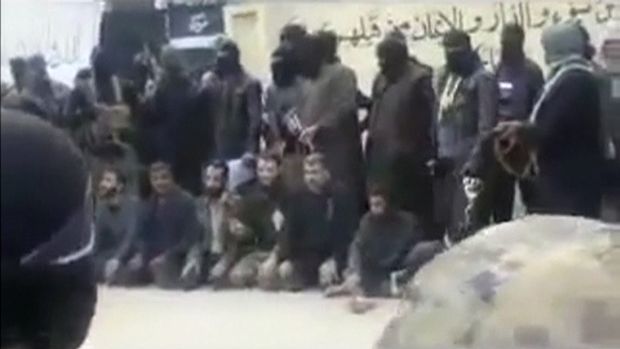One of the obstacles in the fight against epidemic viruses is the evolution of newer, more virulent strains which emerge after medical science has begun to make progress in lessening the initial impact. These strains sometimes carry mutations that make traditional vaccines ineffective.
The newly-emerging Islamic State of Iraq and Syria (ISIS) is a mutant strain of Al-Qaeda, one that has developed to such an extent that it threatens everyone and everything around it. The videos which ISIS members have uploaded online presage the beginnings of an even fiercer form of criminality than we have ever seen before. These are individuals not only totally accustomed to committing abhorrent acts violence which disgust ordinary people—decapitation, the mutilating of corpses—they are also happy to boast about them, filming their awful crimes and broadcasting them online like trophies for all to see. They incline towards bloodshed in a manner that reveals a truly sadistic nature, though they claim to be seeking to restore the rights of individuals and to champion the cause of Islam and Muslims.
ISIS members are trained in an environment in which they are not allowed to reason on matters of Shari’a, only to follow. This is reflected in the way they treat their friends and allies—not to mention those whom they consider to be their enemies. The first ally they turned against was Ayman Al-Zawahiri, the chief of Al-Qaeda, who is supposed to be their commander and leader. When ISIS leader Abu Bakr Al-Baghdadi rejected Zawahri’s call for the organization to stay out of Syria and content itself with being ‘the Islamic State in Iraq,’ the group broke away, becoming the Islamic State of Iraq and Syria. The growth of ISIS reminds us of those stories that begin with an inventor or a scientist developing a creature or a robot with enormous destructive power. Inevitably, the creature goes out of control, kills its maker, and then goes out to destroy everything around it.
Something similar happened to the Muslim Brotherhood after founder Hassan Al-Banna founded the group back in 1936. A ‘secret apparatus’ within the movement went out of control, not staying true to Banna’s original vision, to the extent that its chief Abdul-Rahman Al-Sundi pushed Banna aside, and would have taken over completely were it not for Banna’s close aides, who kept him propped up, according to prominent Azhar scholar Sheikh Mohamad Metwalli Al-Sha’arawi. No one was able to stop Sundi or his apparatus until the time of the second Supreme Guide, Hassan al-Hudaybi, who decided, following a meeting with the Brotherhood’s Guidance Bureau and its Constitutional Assembly, that Sundi be dismissed and the secret apparatus eliminated.
ISIS, though acting autonomously, still carries Al-Qaeda’s genes, most prominently the narrow-mindedness that makes it an easy prey for the intelligence apparatuses of its enemies. This makes it easy for intelligence organizations to infiltrate it and destroy it from the inside, preoccupying the group with internal struggles. Enemies are quick to exploit extremist movements’ greed for power, and their rashness, in order to push them into armed clashes with one another and engage them in struggles over “revolutionary” goals. In fact, no one deserves as much thanks from the Syrian Ba’athist regime, and its allies Hezbollah and the Iran, as ISIS.
Ever since the creation of ISIS, the world has been preoccupied with how it has betrayed and then fought with other factions, particularly the Free Syrian Army (FSA), as well as its killing of their members, and its rejection of calls for reconciliation and the use of a true Islamic Shari’a to settle disputes. It is thanks to this group that the FSA’s image has now shifted from one of a free army engaged in a fight against the brutal yoke of a tyrannical regime, to one of an uncoordinated set of fragmented entities fighting one another as well as Assad.
The Syrian opposition now has two enemies, not one: the Ba’athist regime and the terrorist organizations. The victory of any of them would create a threat to neighboring states. The desire to eliminate the Syrian regime and curb Iranian greed for geographic and ideological expansion in the region has thus given way to the desire to eliminate other outsiders, among them ISIS, from the arena in order to restore the true revolution of a people—an objective which would also restore the world’s trust in this revolution. This process will require enormous efforts to put the genie back in the bottle with the least possible destruction. Yet, doing so while ISIS is still in the process of evolving is more preferable to leaving it until it is mature and has spread to other countries outside Syria.
Because this time, those returning to their home countries from Syria having absorbed the ISIS ideology will be much more dangerous than those who returned from the conflict in Afghanistan in the 1980s.
